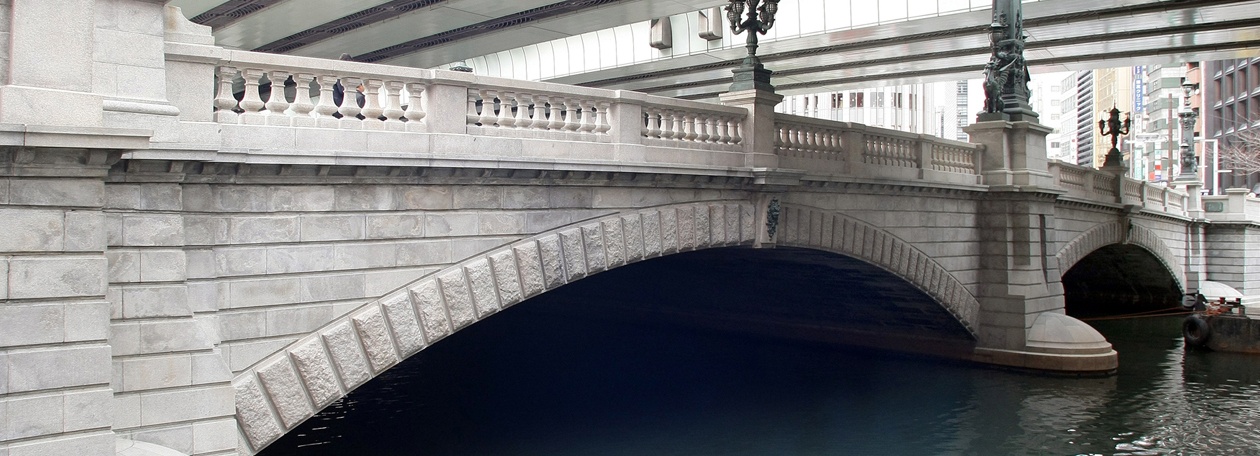Nihonbashi Bridge - Tokyo, Japan

Kärcher cleans the historic Nihonbashi Bridge in Tokyo
According to the famous saying, all roads lead to Rome. In Japan, however, all roads lead to the Nihonbashi Bridge, and have done since the beginning of the 17th century; during the reign of the Tokugawa shogunate, all major trade routes began here. These were used not only for most of the goods traffic, but by many travellers, as ships were a means of travel reserved exclusively for the ruling class. The bridge, which was built in 1603, was therefore the symbolic heart of the country. To this day, there is a bronze plaque in the middle of the bridge on the road marking point zero, from which distances from and to Tokyo are measured and shown on Japan's motorways.
As the original wooden bridge had burned down many times over the centuries, fireproof granite was chosen for the latest reconstruction in 1911. However, this did not make the bridge immune to dirt: over time, dust, moss and algae had built up on the 52-metre-long, 30-metre-wide bridge, forming black encrustations up to 2 mm thick in some places. Traffic emissions from the motorway running at right angles across the bridge also contributed to the dirt.
A team of German and Japanese Kärcher employees took on the task of returning the Nihonbashi Bridge to its former splendour in time for its 100th anniversary. A combination of high-pressure cleaning and low-pressure particle blasting proved to be the most efficient and gentle beauty treatment for the granite, which was cracked and chipped in some places. Application engineers began with pre-cleaning, using high-pressure machines and water at a temperature of around 100°C. GS jet guns were then used to gently remove the remaining dirt and discolouration with the spray agents calcium carbonate and aluminium silicate, without damaging the stone underneath. In order to keep environmental pollution to a minimum, the spray agent was vacuumed up immediately using wet and dry vacuum cleaners. The team rinsed off the residual surface dirt using HDS 13/15 hot water high-pressure cleaners.
Nihonbashi Bridge
The bridge escaped bombardment by the American air force during the Second World War and is today one of only two bridges that remain from the reign of the Meiji Emperor Mutsuhito (1867 - 1912).
The canal that the bridge spans is a former moat that connected the seat of government of the shoguns directly to the sea.
As the historic crossroads of Japan's trade routes, an important commercial centre has developed in the area surrounding the Nihonbashi Bridge. While this was once an area where many fisherman, craftsmen and merchants worked, nowadays it is one of Tokyo's financial and commercial centres.










